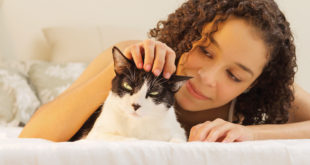Dancing with your Dark Horse by Blair McKissock, MSEd, RYT
Winter is nearly here. The signs are all around us, and inside of us. Nature is signaling the change with the bare trees, cloudy days, and breezy coolness. Internally, our bodies are craving rich foods, warm beds, and lots of sleep. Not too many generations ago, it was a time after the harvest that we prepared to hunker down and wait out the long winter. As we retreat into our homes, we also retreat into our inner world, sometimes confronting and contemplating the struggle between the light and dark sides of the self; as this time of year yields more darkness than light until the Winter Solstice.
Everyone has a side that they keep hidden; the personalities or personas that we don’t like, and desire to change, becoming our “Ideal” self. It is sometimes referred to as the “dark side” or as Carl Jung called it, the Shadow. One might also think of the archetype of the Dark Horse. The Dark Horse is not evil or threatening, yet dark, veiled in shadow or unknown. Of course, these qualities make it scary, yet it is nothing to fear. Our personal dark horse represents those qualities that we try to hide when we put on a smile for the world, when inside it may be more like a raging storm, unsettled and unpredictable. Just like the dark horse, it is mysterious to us, we are cautious to approach, and are intimidated by it. In certain traditions, this time of year is the time of descent and confrontation, when we dance with our dark horse. In Linda Kohanov’s book and card set “Way of the Horse,” she describes the archetype of the Black Horse Wisdom where treasures are hidden in the darkness. “A coal-black horse dances with her shadow under the light of the midnight moon.” (p.165).
Because we are more withdrawn and tend to spend more time indoors during this time of year it is thought of as descending into darkness. It is not a time to fear the dark, but a time to prepare for and meet head-on those patterns that we tend to repeat year after year in our lives. By allowing for reflection and review of the previous year, we might see that we repeat the same mistakes over and over again. By seeing those patterns or tendencies, we can learn to break them and move forward with our growth. Just as in yoga, we must learn to let go of what no longer serves us. This is the time that we reflect on what patterns we see, and choose a focus for our work. It can be overwhelming if we get caught up in everything we perceive as a misstep in our life. We must try to look as objectively as we can to determine what we are ready to confront and work on. It is as if you are looking at a herd of dark horses, running in and out of the shadows, evading the light. Some are large and threatening, others are small and quick. We must choose one to work with at a time. If we try to work on every shadow all at once, we will easily become lost, and run the risk of shutting down or pushing away further any hope of growth. It does take courage to examine the deep recesses of our psyche, and look at what we have done over the years that we may not be proud of, but the only way to find the light is to go within. We must dance with the dark horse in order to tame it, and create a relationship with it and eventually ride it out of darkness and into the light. In many cultures, this dark half of the year was celebrated with ritual, rites of passage from the old self to the new. Just as nature goes dormant, it is the time we recognize as a stillness before spring and everything is new again. Jhenah Telyndru, in her book “Avalon Within: A Sacred Journey of Myth, Mystery, and Inner Wisdom” describes it as “…turning our attention within to see the root of our wounding, the cause of our pain and all that prevents us from being whole.” (p.90) She also reminds us that this shadow self cannot be destroyed, just as energy can neither be created nor destroyed; it is a part of who we are. Our job on this journey is to dance with it, get to know it, and embrace it emerging transformed.
Once we have chosen the dark horse that we are willing to work with we must be realistic. The dark horse can be a handful. It will not be easily tamed, it can rear up and try to strike us, try to run away, or remain completely hidden. We must take this journey one step at a time, approaching with confidence and also awareness. This time is usually the deepest and darkest part of winter, also known as confrontation. We confront this horse and begin the dance as we bring in light, and we learn to understand it from all perspectives with the intention of coming to some sort of resolution with it. It represents the root of our disconnection from the self. Telyndru describes this inner dance: “Seeing the roots of our wounding allows us to throw back the veil of illusion and reclaim energies tied up in retaining these false beliefs about our abilities and ourselves. This reclamation is the gift that can only be found in the darkness.” (Avalon Within, p.108). It is always darkest just before dawn, and though it may be hard to question and square off with this dark horse, we know that just around the corner is the promise of renewal and new life that comes with spring. We can get to know our dark horse through journaling, asking the hard questions about where this tendency that we are working with might have originated, and where it shows up in our life. We might also spend time talking with others who are taking the same journey of self-examination, taking on our dark horses together. Just by recognizing it, naming it and examining it, we have changed it. If we do our jobs right, we will recognize this horse when it shows up in our life, and have the confidence to reclaim our inner power and keep it from running us around the arena, so to speak.
I think we can all agree that there are times when our dark horses seem to be in control, leading us instead of us leading them. Just like horses, we can’t try to bully our behaviors or ignore them pretending they don’t exist. We have to create a relationship with them. Our dark horse may be a recurring thought that runs through our head constantly reminding us of our faults. The harder we try to ignore it, the more persistent it can be. The harder we try to push it out, the harder it pushes back. If we recognize where it comes from, and how it limits us, then we take away its power. It begins to loosen its hold. It may never go away, but we are no longer scared of it, and it no longer rules us. Then in the spring when we emerge from the darkness, our dark horse walks beside us. It becomes a willing participant in what makes us who we are. It can become a source of power that we can call upon when we need it, responding to us instead of fighting and running wild. We then test the horse out during the course of the year until it is time again to examine our herd of dark horses in the shadows of our consciousness, and pick one to dance with until one day, our herd is quiet, settled, and fully integrated out of the shadow and into the light. Until then, embrace the dance with your dark horse.
Blair McKissock, MSEd, RYT is a speaker and author on experiential and nature-based learning. She loves sharing the amazing world of equine-assisted learning and therapies through her work at Strides to Success in Plainfield, Indiana. You can learn more about coaching, OmHorse mounted yoga sessions, and upcoming equine-assisted workshops at stridestosuccess.org.
 Conscious Community Magazine Dedicated to Elevating Consciousness
Conscious Community Magazine Dedicated to Elevating Consciousness




